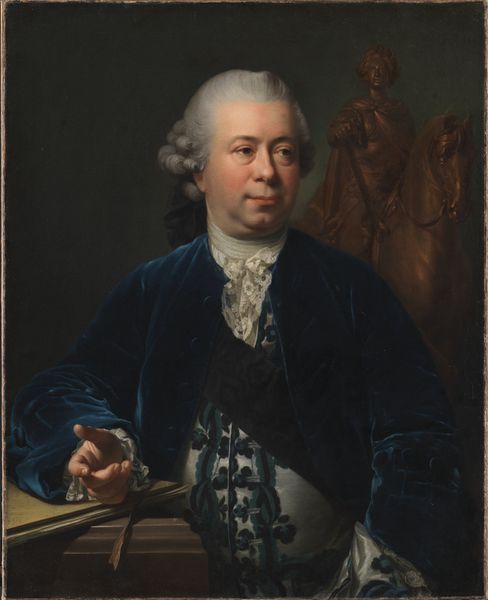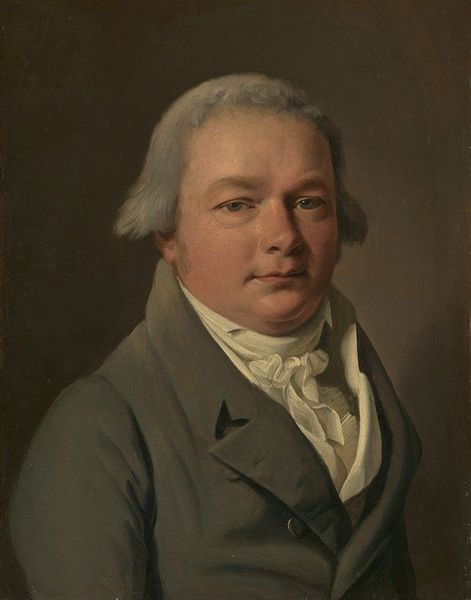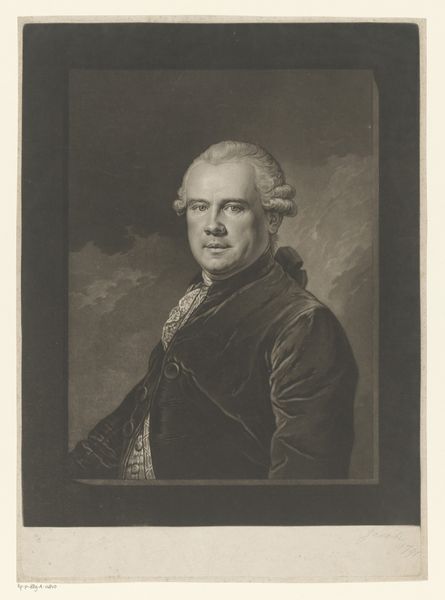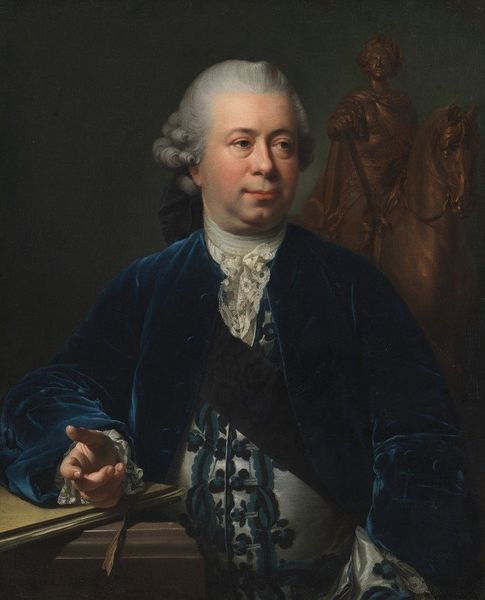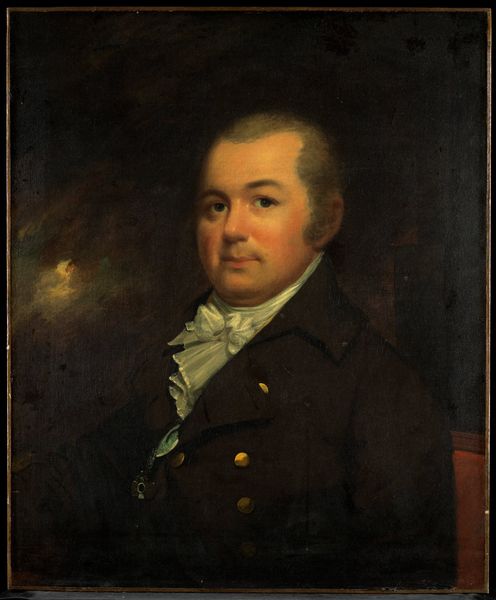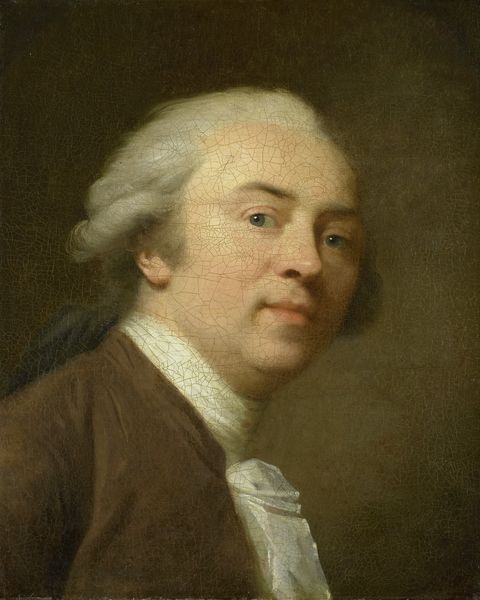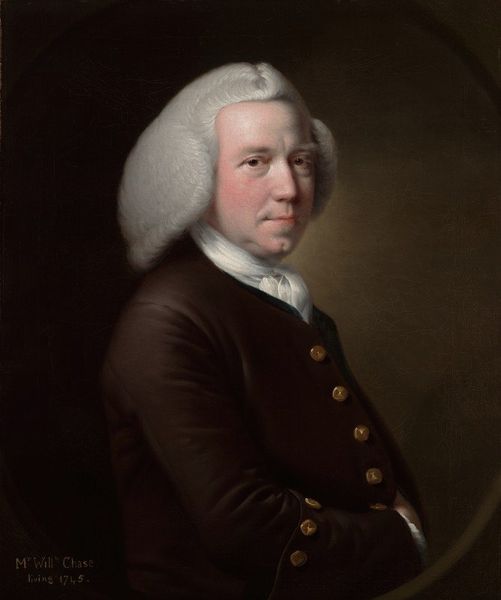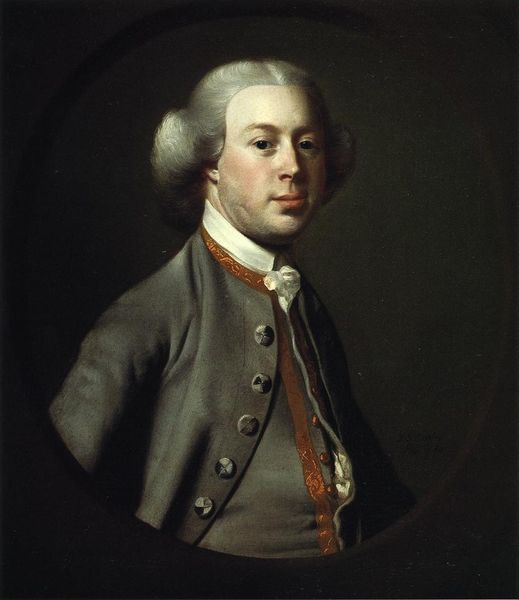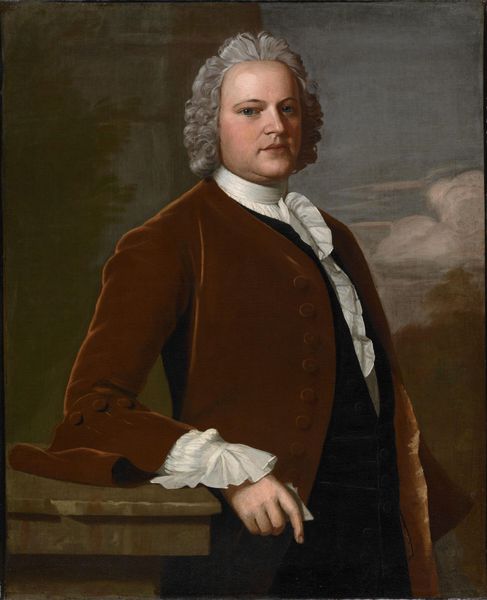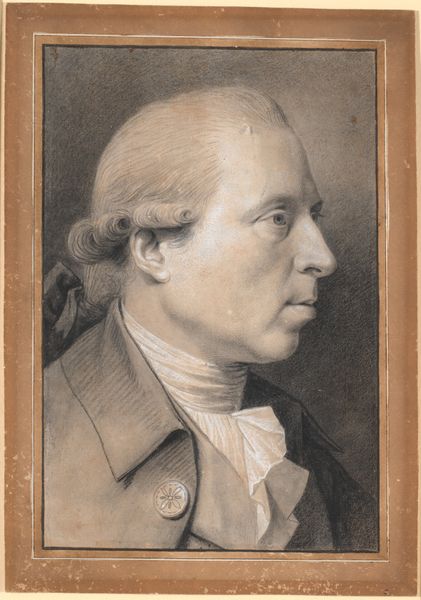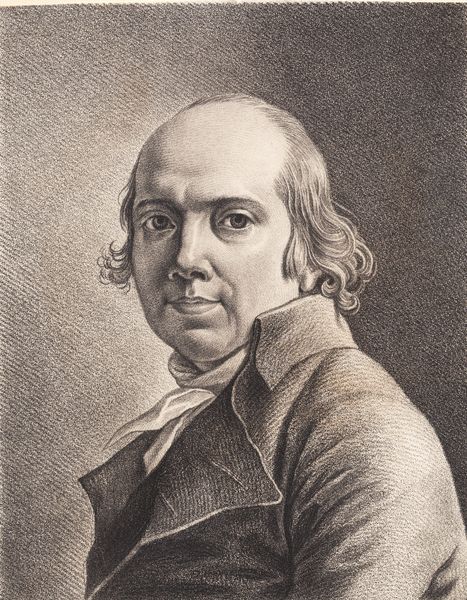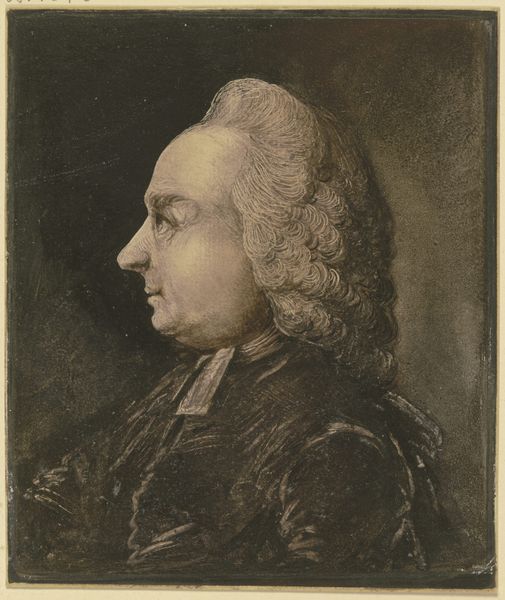
drawing, pastel
#
portrait
#
drawing
#
neoclacissism
#
men
#
portrait drawing
#
pastel
Dimensions: 9 7/16 x 7 1/4 in. (24 x 18.4 cm)
Copyright: Public Domain
Curator: At first glance, he strikes me as quietly confident. Almost serene, wouldn't you agree? The light seems to emanate from within. Editor: This is a pastel portrait of Mederic-Louis-Elie Moreau de Saint-Mery, created around 1798 by James Sharples. Saint-Mery was a fascinating figure, a lawyer and politician involved in the French Revolution and deeply impacted by its social upheaval. Curator: Ah, revolution in his bones perhaps! You can sense the weight of it in those knowing eyes. He's lived, hasn't he? It is hard to describe, but I find that pastel portraits give me this impression that the subject is always alive, more than oil portraits do. Editor: Sharples, though British, captured many portraits of American founding fathers and other notable figures of the era. His work provides insight into the individuals who shaped revolutionary thought. This portrait, of course, shows the global networks influencing those movements. Curator: The stark simplicity, it draws you to his gaze, doesn't it? Very few details in the composition. Even his coat seems to fade into the background; that makes his expression all the more important. Editor: Precisely. Sharples utilizes Neoclassical aesthetics in his portraiture, emphasizing rationality and directness. There’s an element of idealization too, a focus on presenting a figure worthy of historical record. I mean, Saint-Mery ended up in Philadelphia at one point and he wrote extensively about the city... This image speaks to how revolutions create diaspora, cultural exchanges, and so much more. Curator: It does seem appropriate that this image would make its home in the Met now. The piece transcends just being a portrait—it is a mirror reflecting our shared human history through one individual. His gentle strength serves as a link to another place and time. Editor: Yes, and Sharples has given us more than just a likeness. He has provided a window into the social and political upheavals that shaped both Saint-Mery's life and the wider world. The artwork shows us not just what Saint-Mery looked like, but how he wanted to be seen.
Comments
No comments
Be the first to comment and join the conversation on the ultimate creative platform.
